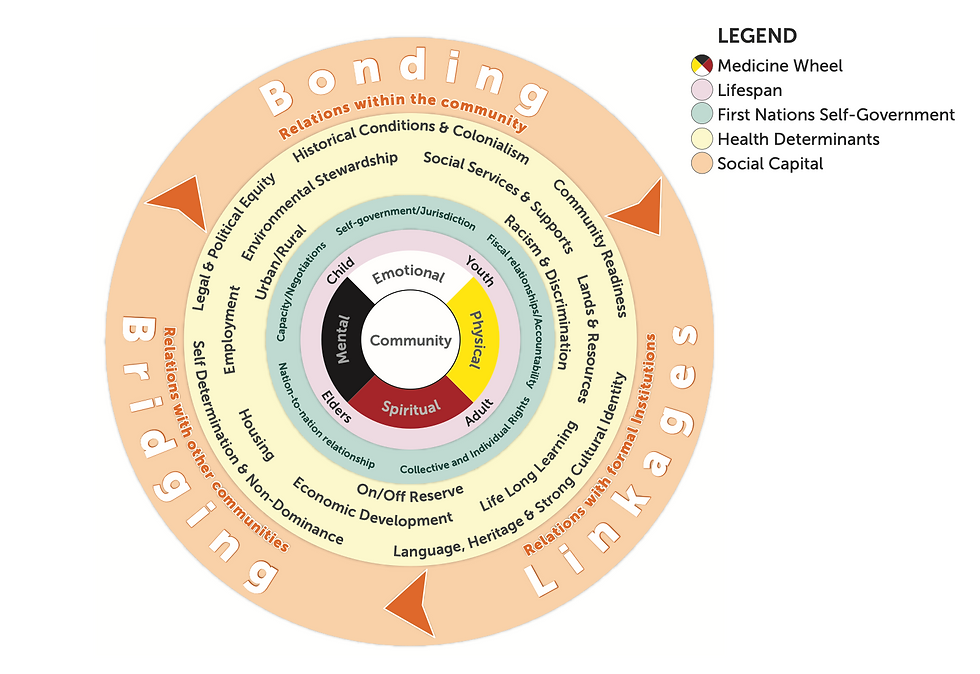Vulnerability - Nunavut Housing Crisis and the Relationship Between Homelessness and Health
- samkriksic
- Jul 16, 2020
- 4 min read
Updated: Jul 25, 2020
Introduction
What does it mean to be “vulnerable”? The definition of “vulnerability” is to be “capable of being physically or emotionally wounded” and “open to attack or damage” (Merriam-Webster, n.d.). As a broad definition, it serves well to demonstrate the various planes of vulnerability. For example, this could refer to your physical environments, such as homelessness, or your physical or emotional state of wellbeings, such as suffering from mental illness or chronic disease. Canadian Inuit are broadly considered to be a vulnerable population, “based on health outcomes and experience of adverse social determinants of health” (Clark & Preto, 2018). Working with the Baffin population, I see the impact of vulnerability as it relates to homeless Inuit and support the notion that the Canadian health system has “an ethical duty to create just and equitable health care systems that promote autonomy, foster engagement, enhance cultural safety and support the well-being of all” (2018).
Nunavut Housing Crisis
Historically, “Inuit lived a nomadic lifestyle…[until] the Canadian government implemented resettlement programs in the Eastern Arctic, moving Inuit to more remote areas to protect Canada’s sovereignty and trade, while also moving Inuit off the land to reduce relief costs” (Healey, 2017). This face-paced change in lifestyle and location, combined with harsh and extreme conditions for housing structures, culturally inappropriate housing designs, and substandard construction materials for the conditions have led to disproportionately higher rates of homelessness in Nunavut compared to the rest of Canada (Minich et al., 2012). Furthermore, homelessness in the Arctic is increasingly more difficult to measure, as the data struggles to capture “hidden homelessness”, wherein, nomadic individuals will stay with family/friends/neighbors, which is a common practice in Inuit culture (Minich et al., 2012). This further contributes to the Nunavut housing crisis and health issues related to overcrowded housing, such as communicable diseases.
Effects of Homelessness on Health
Homelessness has a measurable impact on health, as demonstrated through “the higher rates of premature mortality…especially from suicide and unintentional injuries, and an increased prevalence of a range of infectious diseases, mental disorders, and substance misuse” (Fazel, Geddes, & Kushel, 2014). When considering the Baffin population, these risks can be considered more complex in conjunction with the harsher physical environments, the pre-existing prevalence of infectious disease (i.e. Tuberculosis), food insecurity, limited access to health care, limited access to emergency services and shelters, poor relationships between institutions and Inuit historically, high rates of familial violence and intergenerational trauma, and high rates of risk behaviors in youth (i.e. smoking and alcohol use). With homelessness having such a large impact on health and well-being, Nunavut and other northern Canadian regions need to maximize efforts to improve the health system and enhance accessibility to health care and safe, appropriate housing.
Future Implications, Planning and Policy Development
Consider the following video regarding homelessness, physical and mental health, and the cycle of intergenerational trauma (Royal Roads University, 2013).
This video demonstrates some of the cyclical concerns related to homelessness and poor health outcomes, for example, alcohol and substance misuse. Most shelters/community housing have strict zero-tolerance policies related to the use of substances on-premises or being on premises while under the influence. This forces the most vulnerable people back out on the street, to further engage in risky behavior and be subject to the conditions of the environment. The region must continue to build support systems, including accessible health care and housing in order to break this cycle. Examples such as transitional housing programs, increasing support facilities that are culturally appropriate (i.e. addiction treatment centers), and building strong health care teams with consistent staffing could all help to alleviate the immediate and future rates of homelessness in Nunavut and improve health outcomes for this population. Furthermore, there needs to be a change in health and housing policy to reflect historical trauma and current culture to change the trends in homelessness and health outcomes.
Conclusion
Due to the fast-paced changes that occurred in Nunavut through colonialism, in conjunction with systemic failure to keep up with the housing needs of the fast-growing population, Nunavut is in a housing crisis. This results in many residents living in sub-standard, harsh conditions which further perpetuates poor health outcomes and contributes to the ongoing cycle of poverty and higher mortality rates of the homeless. Nunavut needs to engage the community to continue to build culturally appropriate support programs and policies, governmental and grassroots, to assist in breaking this cycle of homelessness and address the health and housing needs of one of Canada’s most vulnerable populations.
References
Clark, B., & Preto, N. (2018, March 19). Exploring the concept of vulnerability in health care. Retrieved from https://www.cmaj.ca/content/190/11/E308
Fazel, S., Geddes, J., & Kushel, M. (2014, October 25). The health of homeless people in high-income countries: Descriptive epidemiology, health consequences, and clinical and policy recommendations. Retrieved from https://www.ncbi.nlm.nih.gov/pmc/articles/PMC4520328/
Merriam-Webster. (n.d.). Vulnerable. In Merriam-Webster.com dictionary. Retrieved July 12, 2020 from https://www.merriam-webster.com/dictionary/vulnerable
Minich, K., Saudny, H., Lennie, C., Wood, M., Williamson-Bathory, L., Cao, Z., & Egeland, G. (2012, March 18). Inuit housing and homelessness: Results from the International Polar Year Inuit Health Survey 2007–2008. Retrieved from https://www.tandfonline.com/doi/abs/10.3402/ijch.v70i5.17858
Nunavut Housing Corporation's Appearance Before the Standing Senate Committee on Aboriginal Peoples: Nunavut is Facing a Severe Housing Crisis. (2016, March 23). Retrieved from https://assembly.nu.ca/nunavut-facing-severe-housing-crisis
Royal Roads University. (2013, August 29). A cold place to live outside: homelessness in the Canadian arctic [video]. YouTube. https://www.youtube.com/watch?v=2ne95FzkWeo



Comments